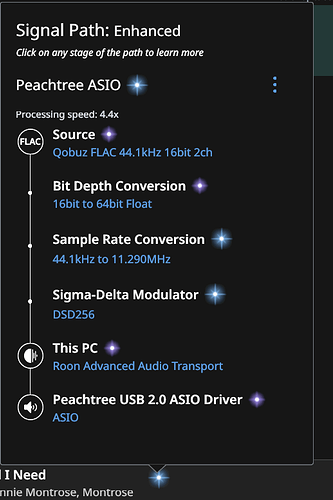The non-2’s stutter really badly for me but the XTR filters (my preference) are the worst. I have gone back to the -2’s. I tried playing around with modulators, etc but the stuttering was still there. I upsample everything to DSD 256
Interesting, this other bloke above says it all works at DSD512 with non-2s xtr filters.
I’ll get the old man to test to add another data point this weekend.
I checked DSD 512 poly-sinc-xtr-mp with new graphics driver, new HQP Desktop and new SonicOrbiter software. Still stutters badly on my i7 7700 and GTX970.
Noted. But I’ve found HQP Embedded performs differently to HQP Desktop, even when both are run on the exact same hardware.
So the sonicT i7-7700 may perform differently to your i7-7700, even with your CUDA offloading enabled.
Will check the old man’s sonicT i7 this weekend.
Just spoke to the old fella - it can’t handle the non-2s xtr filter. There is stuttering from the start of playback.
So not sure how the other chap has it working on the same hardware - unless his sonicT i7’s insides is different to mine.
Not to bother though because even if it did work, I’d recommend my old man stick to 2s variants, just to run the CPU cooler, until the i9-9900 one day can run it without breaking a sweat, with low loading.
I found it a pretty extraordinary report, wondered if there might besome confusion about the filter.
He said he has an i7 but maybe it’s a custom sonicTransporter i7-8700K? The most important thing is he sounds happy 
Now that the dust has settled, it appears my old man has gravitated to poly-sinc-xtr-lp-2s + AMSDM7 512+fs as his preferred favourite.
I like the same filter but just with ASDM7, which sounds a tad (i.e. not night and day) more transparent than AMSDM7 512+fs and the DSD7 256+fs to my ears.
All sound great though and elevate the Pro-ject S2 DAC and an iFi iDSD Black Label I tried.
In my system with the music I listen too, the XTR-lp 2’s sound wonderful. I am not sure I could hear a difference b/w the 2’s and non 2’s anyway. I have tried all of the filters but I always end up back with this one. It sounds like vinyl to me.
I feel so so silly saying it sounds very Chord-y (as intended by Jussi) because there’s so much more to how a DAC’s sounds/performs than only the digital filters (power supply and analogue sections) but… it does sound very Chord-y…  and my ears like that too.
and my ears like that too.
30 posts were split to a new topic: CPUs known to be able to do HQP non-2s poly-sinc-xtr from RedBook to DSD512
For clarity, I’ve split out the discussion on non-sonicTransporter i7 hardware.
On a positive note, I haven’t had a phone call or TeamViewer session with my old man since the latest Rendu NAA update.
He just presses the power button on the sonicT i7 I gave him, and by the time he walks to the listening room and has a seat, Roon is ready and HQP Embedded is ready. Everything is controlled with the iPad - there’s no Mac or Windows interaction at all.
Every day that goes by without the need for a TeamViewer session is a good day 
The XTR-lp 2s is my fav too,sounds more “musical”
I reviewed this old thread after getting a new Sonictransporter i9 with HQP embedded. Haven’t been able to exceed DSD 128 with USB connection, through ultraRendu, to a Peachtree Nova 150.
I tried what @dabassgoesboomboom did: running HQP embedded on the ST i9 while running Roon Core on a separate machine (Mac Mini i5). Still no go.
So again, I think this is a limit of the Peachtree amp. According to some reports it can go to DSD 256 with input from a Windows machine (with ASIO driver). But not with a feed from a Mac or Linux machine, even while spreading the load across 2 machines. Maybe with ALSA instead of NAA? If so, I haven’t figured out how to set this up with the ultraRendu. Maybe requires a direct USB connection from Sonictransporter to amp?
Well, look here:
https://www.peachtreeaudio.com/nova150-amplifier-with-dac.html
Under “Specifications” it says that it supports “2.8224-5.6448MHz DSD”. That means it supports DSD64 to DSD128.
A quick read suggested the Nova 150 tops out at ‘double DSD’ which is DSD128. Some examples may be able to go higher but that was using Windows. Regardless, the DAC chipset is rated 128 max.
